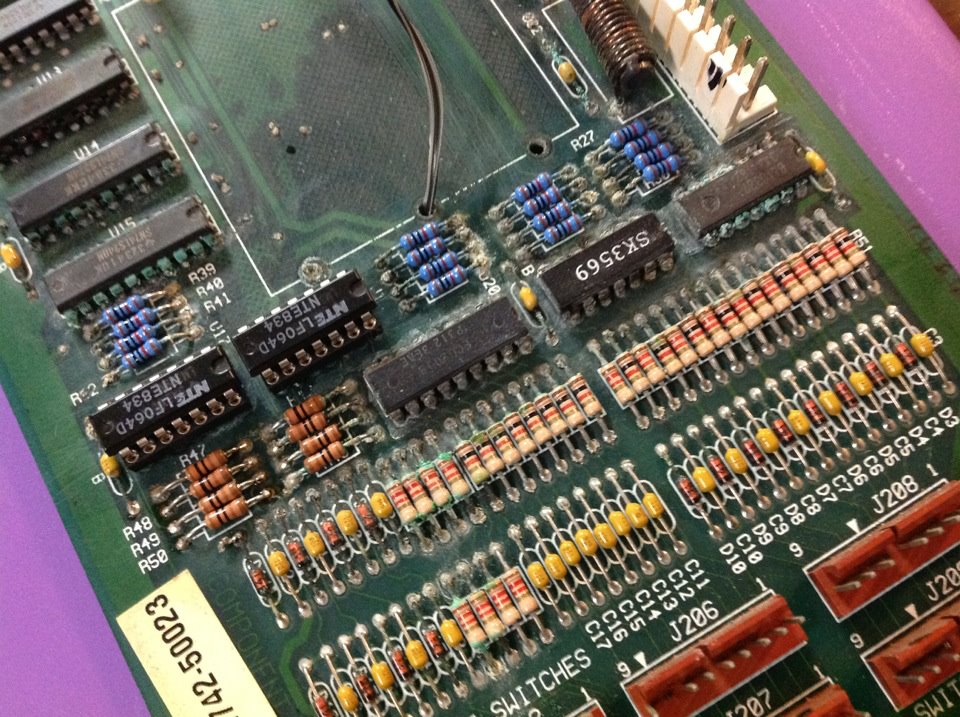The other day I was reminded of how important it is to make sure you fully mitigate battery acid leakage on circuit boards. A friend picked up a STTNG (Star Trek the Next Generation) pinball machine. I’ve been systematically going over the game trying to get it working. When I first looked at the backbox I noticed wires had been run for a remote battery pack – I thought “good deal, one less thing I have to worry about.. the MPU board is clean…” so I went about working on other areas of the game, checking switches and optos and everything. After I got the game booting up I discovered the start button would not work. After spending a bunch of time testing all the wires and connectors and still not finding the culprit I took a closer look at the MPU board where the cabinet switches plug in… 
I have seen acid damage before, but nothing as sneaky and widely-spread as this. Components all across the main processing board were showing signs of corrosion and damage, but I could also see that repairs had been done, several components and ICs had been replaced and sockets added. Someone cleaned up battery damage and added an external battery pack. But there was still major corrosion on the board… what gives??
My theory is that whoever cleaned the circuit board, instead of using vinegar and multiple paper towels or q-tips, they probably used a single wipe, and in the process of cleaning the circuit board, actually spread the acid all over the components! At the time, they thought it was clean, but they actually made the problem worse.
This is why it’s very important to thoroughly clean off any leaked electrolyte from batteries, and use vinegar to neutralize it, and use multiple wipes — do not wipe from one area to another area. Work on small parts of the board at a time, throw the q-tip or paper towel away and use a clean one when you start to work on another area of the board. Do not risk spreading the acid to previously un-damaged components.
 I take a bit of a break from working on pinball machines in this video and do some work on a Tempest video game I pieced together from various parts. The monitor started smoking and fizzing on me and then went completely out — which signaled a good time to completely rebuild it.
I take a bit of a break from working on pinball machines in this video and do some work on a Tempest video game I pieced together from various parts. The monitor started smoking and fizzing on me and then went completely out — which signaled a good time to completely rebuild it. 
